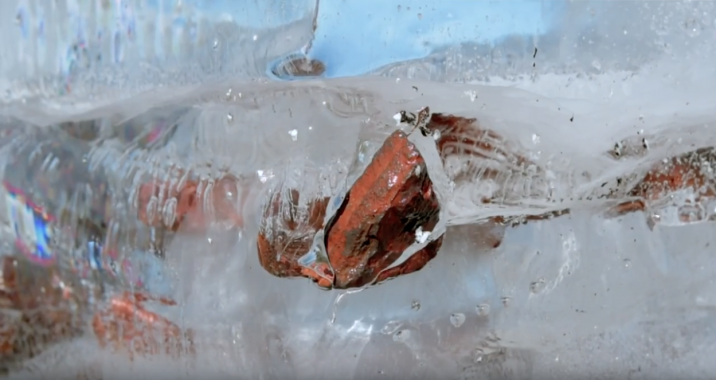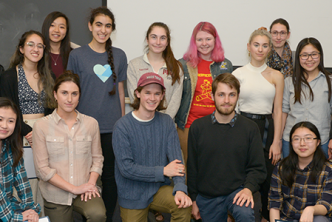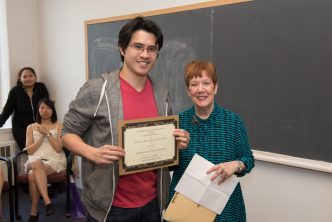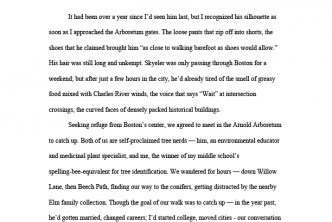“Fictional Landscapes” won second place for the Enterprise Poets Prize for Imagining a Future, part of the 2019 Ilona Karmel Writing Prizes.
“The mechanisms of progress were able to produce a great fiction. Fiction of the inexhaustible exploitation of nature, fiction of the acceptance of inequality among men and fiction of the illegitimacy of the ways utilized by certain groups to understand the world. But, at last, are we talking about reality or fiction?”
Apagamentos, Renata Marques
Here, the landscape is understood as a cultural product, as a result of the build-up of layers of natural action and human interference. It is understood that the landscape is created by the continuous overlapping and blending of natural and social existences, besides corresponding to a mental construct, somewhat from the imaginary that integrates a collective memory. However, despite being frequently associated with a scenic ideal, the landscape is not reduced to the myth of untouched nature. From human intervention, it also corresponds to various facets of a post-industrial society, which encompasses from narrow dirt trails cutting a wooded hill, up to productive landscapes, transformed by industrial complexes (CORTEZÃO). The possibilities for the sensitive apprehension of the landscape, therefore, are not reduced to the traditional picturesque or idyllic, which is often insisted by common sense. The modified Earth surface is the ever-contemporary morphology of the world, which makes, from the western standards of civilization, its own natural idealism resound as purely ideal.
However, strangely fascinating industrial landscapes – possibly due to their heterotopic spatiality, or maybe because they constitute forbidden territories, inaccessible clusters – are often produced from a hegemonic and fallacious perspective of progress. Such perspective insists on a growth concept exclusively based on economic aspects, which seems not to acknowledge the material finiteness of the Earth, as well as other possible ways to see and interact with the world (MARQUES). In this context, the industrial landscapes derived from mined territories result from a dynamics of exploitation on the brink of depletion, since they have as a meager threshold – despite frequent circumventions – the sleek legal requirements. Thus, mining operations end up producing landscapes that are self-consumed, from an accelerated transformation under the exclusive diktat of a global economy.
In the open pits from which iron ore is exploited, the construction of the terrain, of its natural geological pace, invisible to the eye, is displaced towards a fast, technical and homogenizing action. The landscape becomes volatile. Mountains observed while crossing BR-356 and BR-040 highways are no longer visible. Disguised by the density of extensive eucalyptus forests, their concaves and convexes are made flat. Mechanically geometrized in terraces and slopes, they give room to a mining landscape impregnated of neutrality, once it becomes morphologically homogeneous. This landscape is here, but it might as well be in any other place or mined continent. The rapid dismantle of the terrain promotes ephemeral, similar and reproducible landscapes, which are reduced to their fragments and which may have already been devised as fictional. Despite being concrete, they are so anchored in a fiction of progress, a progress imposed as the sole path to a development held as necessary, that they almost touch the surreal.
The rapid dismantle of the landscape and its reconfiguration as an industrially productive landscape, although socially and naturally sterile, are the personal spatial perceptions driving this work. From a critical perspective, I debate such dilapidation of the landscape in the name of the sustainment of a global economy, based, among other instruments, on the geographic transfer of value (SOJA). This transfer is the mechanism by which the value extracted and produced in outskirt areas is consistently realized and accumulated someplace else. That is, how nature exploited and work performed at a certain place are converted into capital elsewhere, thus producing the geographically unequal development.
In Brazil, there are a total of 189 active mines, of which 132 exploit iron ore. The extraction of iron ore in 2015 in Brazil was concentrated in the action of only 9 main companies. Vale S/A, an originally public company, but privatized in 1997, is currently a multinational corporation, having foreign companies as major shareholders. Vale S/A holds 73.77% of the trading of domestic iron ore. In 2015, the mining companies operating in Brazil traded 460 million tons of mineral goods, of which 420 million are of iron ore. The total amount of sales of mineral goods added up to BRL 67.5 billion ($17.7 billion). Of this value, only BRL 1.15 billion ($302.6 million) was directed to the public authority as financial compensation for the exploitation carried out in the territory. (Source: DNPM – Brazilian Mining Annual Report, 2016 and IBRAM – 2015).
Among Brazilian and foreign shareholders, the amount of capital produced moves from productive landscapes to other regions of the country and the globe. Through the flow of capital, the landscape also moves, traded by means of their mined fragments. In this dynamics, the exploited sites earn low wages, enough for the survival of the population and for the reproduction of their existence for future exploitation, besides the environmental degradation and the offering of natural attributes as resources to be extracted. Therefore, the exploiting process from which the dilapidation of the landscape derives offers little to the site in which it is carried out.
So, the geographic landscape of capital (SOJA), dynamically organized in accumulating centers and degraded outskirts, guarantees itself as such from the maintenance of inequalities on local and global spectrums. The key issue is that the inequality among different regions is both the result of the geographic transfer of value, as well as an instrumental condition for the perpetuation and survival of this mode of production. Therefore, in the paradigm of progress, the construction of unequal relations is the foremost condition for its continuity, not a side effect to be overcome.
Bibliography
ACCIOLY, Sabrina M. L.; ABREU Renata R.; ARAÚJO, Fabiana O.; BESSA, Alatamiro S. M.; CARSALADE, Flávio L.; CRESPO, Jeanne C. M.; MORAES, Fernanda B. Mineração em Minas Gerais, território e paisagem cultural. I Seminário Internacional de Reconversão de Territórios. 2012, Belo Horizonte.
CORTEZÃO, Simone. Cartografia da Paisagem Alterada. 2010
MACEDO, Eric. A maldição dos recursos. PISEAGRAMA, Belo Horizonte, número 10, página 10 – 19, 2017.
MARQUEZ, Renata. Apagamentos. PISEAGRAMA, Belo Horizonte, número 02, página 26 – 27, 2011.
SOJA, Edward W. Geografias Pós-Modernas: a reafirmação do espaço na teoria social crítica. Tradução [ da 2.ed. Inglesa ] Vera Ribeiro; revisão técnica, Bertha Becker, Lia Machado. – Rio de Janeiro: Zahar, 1993.
TUGNY, Rosângela de. Trem do progresso. PISEAGRAMA, Belo Horizonte, número 02, página 07 – 09, 2011.
BRASIL. Departamento Nacional de Produção Mineral. Anuário Mineral Brasileiro: Principais Substâncias Metálicas / Coord. Geral Wagner Fernandes Pinheiro, Osvaldo Barbosa Ferreira Filho, Carlos Augusto Ramos Neves; Equipe Técnica por Marina Marques Dalla Costa…[et. Al.]; – Brasília: DNPM, 2016.
BRASIL. Instituto Brasileiro de Mineração. Informações sobre a economia mineral brasileira 2015 / Produção Técnica Cinthia de Paiva Rodrigues e Edmilson Rodrigues da Costa – IBRAM, 2015.





